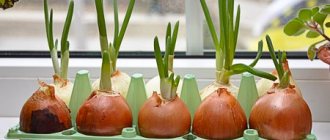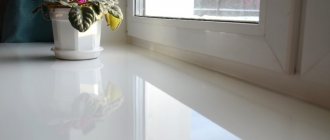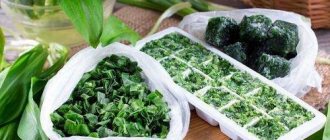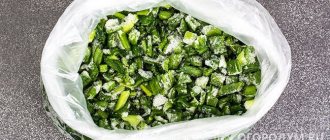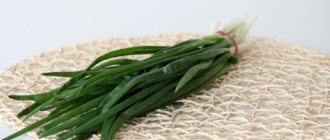Zebrina is a very beautiful decorative deciduous hanging plant that came to us from Central America and Mexico. Not so long ago, zebrina was one of the most popular indoor floriculture crops. Unfortunately, now this plant is undeservedly forgotten and is not often found in our homes. The time has come to revive the former popularity of zebrina, because it is not only very beautiful, but also a useful houseplant.
When the zebrina is young, its shoots have an erect appearance, but then they grow back and droop under their own weight. Falling shoots resemble a lush and seething waterfall, which is why zebrina is used for zoning or decorating rooms, loggias, gazebos, window and doorways, and creating flower arrangements. It is also grown as a ground cover, covering the ground with a dense carpet due to the branching of the stem and strong rooting at the nodes.
The plant owes its name to the color of its leaves, whose longitudinal green, pale green, white, red or silver stripes resemble the color of a zebra (zebrinus from Latin - striped). The shape of the leaves can be oval or ovoid oblong with pointed tips up to 5 - 10 cm in length, and the lower smooth side is purple in color. In varieties bred by breeders, the width of the stripes is different.
Zebrina belongs to the Commelinaceae family. Many people confuse this plant with the well-known Tradescantia, to which it belonged until recently. But some features of the zebrina, for example, the original color of the leaves, made it possible to distinguish it into a separate genus, including 4 species.
Zebrina is a perennial plant, but rarely blooms. During the period from April to August, small flowers can be observed, and each of them consists of 3 petals of a purple, lilac or pink hue. Zebrina is distinguished from the same Tradescantia by its fused-leaved corolla and calyx.
Description
Zebrina pendula f. quadricolor
Zebrina is a perennial ornamental plant belonging to the Commelinaceae family. The leaves can be oval or ovoid, oblong in shape with pointed tips. The leaf blades have slight pubescence. The front part of the leaf is covered with two wide white stripes. The inside is painted red-violet. The length of the leaf plate is 5-10 cm, width 4-5 cm.
The stem is fleshy and erect, but as it grows, it begins to spread along the ground or fall out of the hanging pot. Creeping shoots. Zebrina blooms rarely; from April to August, small flowers can be seen on the plant, each of them consists of three petals of purple, lilac or pink.
The flower is native to Mexico and Central America, where it grows as a garden perennial. We grow it as a houseplant in a hanging pot. The flower is quite easy to care for and resistant to diseases.
The plant was considered a relative of Tradescantia. Outwardly they are very similar. However, the zebrina was separated into a separate genus, because The unusual color of the leaves and the structure of the inflorescences are unique to this flower.
Bloom
Tradescantia rarely blooms at home, but many gardeners say that when comfortable conditions are created, small flowers with three petals of bright colors appear on the shoots.
Zebrina flower in the photo:
Kinds
There are several popular types of zebrina suitable for growing indoors. Let's look at the most popular of them.
Tradescantia zebrina (Zebrina pendula)
Tradescantia zebrina (Zebrina pendula)
Tradescantia zebrina (Zebrina pendula)
Zebrina pendula Tradescantia
is very popular. This is a bare-stemmed plant with hanging shoots. The leaves are ovoid in shape with an elongated tip, they are arranged in two rows. Along the plate there are two light and clearly defined stripes of silvery-white color. The interior is painted in shades of violet, pink or purple. The shoots take root easily and adapt to any conditions.
Zebrina purpusii
Zebrina purpusii
Zebrina purpusii
Zebrina purpusii
The recumbent stems have slight pubescence. The leaf blade is about 8-10 cm long. The inner side of the leaf is smooth and purple, but the front part is pubescent and has a purple-olive hue. A plant of this species does not have distinct stripes on its leaves. If zebrina purpus develops in the shade, the lack of light will provoke a change in color - the leaves will turn green. Small inflorescences are painted pink.
Zebrina pendula f. quadricolor
Zebrina pendula f. quadricolor
Zebrina pendula f. quadricolor
Hanging zebrina (Zebrina pendula f. quadricolor)
It is distinguished by its variegated color. There is a green tint running through the center, and closer to the edge it becomes red-green with white stripes. The reverse side is pink and purple. The front side of the leaf is pubescent, the inside is smooth.
Zebrina flocculosa
Zebrina flocculosa
Zebrina flocculosa
Zebrina flocculosa
The leaves of this species are light green or whitish in color. The leaf blades are pubescent. The flowers are purple.
Origin story
In the distant seventeenth century, John Tradescan served as the chief gardener for the English king Charles the First , and was also a scientist-researcher and traveler. At that time, the newly discovered continent of America was being actively studied, and a huge number of plants unknown in Europe required classification and naming.
Among this diversity, John's attention was drawn to an inconspicuous, creeping plant from the tropical forests. It did not have beautiful flowers, but was distinguished by its unpretentiousness and rapid growth.
Tradescan realized that this plant had wonderful prospects and took a serious approach to its cultivation and cultivation.
Among the many indoor plants, few people do not recognize this plant and call it by name, remembering him - the gardener Tradescana .
Caring for a zebra at home
If the correct lighting and watering regime have been selected for the plant, then there will be no problems with its care. It must be remembered that the zebrafish quickly adapts to the conditions of an enclosed space, but needs regular ventilation.
In a young zebrina, the shoots grow upward and have an erect appearance, but over time they grow back and begin to droop under their own weight. Falling shoots perfectly decorate a hanging pot. In open ground, zebrina can be grown as a ground cover plant.
Temperature
Zebrina feels good at room temperature that is comfortable for humans (18-25°C). In winter, the temperature should not be lowered below 13°C.
Light
Zebrina loves bright light very much. The room where the plant is located should not be shaded during the daytime. In summer, the zebrina can be taken out onto the balcony or veranda. In poor light, the plant loses leaves abundantly and grows slowly.
Place
An ampelous flower can be grown on a stand or hanging pot. Zebrina will do well in the brightest room. If the window faces south, the plant should be shaded to prevent direct sunlight.
Sometimes zebrina is planted in open ground, especially in summer.
An excellent option for placing zebrina in the house would be between the windows, since the plant needs light and regular ventilation.
Humidity
Zebrina can withstand missing 1-2 waterings. Does not require additional moisture. On hot days, spraying the aboveground part once a day is allowed. In winter, zebrina should be placed away from heating devices, and the number of sprays should be increased to twice a day, since heating dries out the air greatly.
Watering
The plant needs watering all year round, but it should be reduced during the winter months. Excess water coming out of the drainage holes must be removed.
In summer, spring and autumn, 2-3 waterings per week are enough; the earthen clod should not be allowed to dry out. In winter, moisturizing is recommended once a week.
Trimming
To stimulate growth in zebrina, it is necessary to pinch long shoots. No formative pruning is required. The plant may lose its leaves, so several seedlings need to be planted in a pot. Rotten and diseased shoots must be cut off.
Top dressing
Zebrina especially needs fertilizer during the period of active growing season and flowering (from March to late autumn). It is necessary to use complex mineral supplements suitable for indoor flowers. They are required to be paid monthly. At the same time, you cannot overdo it, so it is recommended to apply mineral fertilizers in a dose less than 2 times that indicated in the instructions.
From October to February there is no need to fertilize. It should be remembered that an excess of fertilizers is just as harmful as a deficiency.
Wintering
From October to March the plant goes into a dormant state. Watering is reduced to once a week, fertilizing is stopped altogether.
Transfer
Plants up to 2-3 years old need to be replanted annually. The procedure must be carried out in early spring. It is enough to replant adult flowers every 3 years.
A universal flower soil is suitable for zebrina. You can independently mix 2 parts of leaf soil and 2 parts of turf soil, add 1 part of coarse sand to them. Another option is to take turf soil, peat soil, humus, sand in equal proportions and add two parts of leaf soil.
After 3-4 years, the flower loses its decorative effect due to lost foliage. Therefore, many gardeners do not replant zebrina at all, but purchase or grow a new one. Moreover, growing a new zebrina is quite simple.
Possible problems
If the Tradescantia room begins to look different than usual, then pay attention to the care and eliminate the mistakes made.
- The shoots are bare, there are few leaves: the plant lacks water and nutrients;
- Leaves have lost their color: not enough light;
- wilted, yellowed leaves: due to lack of moisture;
- The tips of the leaves dry out: the room is too dry;
- Drooping, thinning leaves become watery: the soil is swampy or excessively dry. If the soil is dry, watering will save the tridescantia, but prolonged moisture can lead to problems with the roots. In this case, it is best to cut off the shoots and root them in a new container.
Zebrina breeding
It is very easy to propagate the plant. In addition, zebrina can be propagated throughout the year. The simplest and most common method is vegetative (cuttings). You need to cut strong cuttings about 5-8 stems long, they should have a growing point.
Cuttings can be rooted in water or directly in the ground; the second option is simpler and faster. To do this, you need to take a small pot measuring 11 cm in diameter and plant several cuttings in it at once next to the walls of the container. When the cuttings take root, they can be planted in separate pots or left in one.
Striped miracle zebrina
Zebrina (Zebrina) is a herbaceous, very decorative, ground cover, unpretentious perennial in the Commelineaceae family.
It is impossible to deny that the zebrina belongs to the Tradescantia, but the differences are obvious. Firstly, these are the incomparable stripes on the oval, pointed leaves, the upper side of which is shiny, green-silver, and the back of the purple-violet hue. This beauty is located on young erect stems that droop with age. The base of the flower is a not very deep root system.
The original coloring of the leaves of the flower gave rise to its interesting name zebrina or striped.
The second distinctive feature of the zebrina can be considered its direct relationship to witchcraft.
Tradescantia zebrina has medicinal properties very similar to those of great and famous homeopaths such as Kalanchoe , aloe, geranium.
Chlorophytum and spathiphyllum can partner with this striped miracle to purify indoor air.
Thanks to the latest research, antibacterial elements with a unique ability to lower blood sugar have been discovered in zebrina leaves; the presence of natural phytoncides gives the plant the ability to help the body fight microbes and viruses, burns and even stomach ulcers.
People say that the zebrina flower (mallow) has psychic abilities. The flower reacts to negative and positive territories. The general appearance of the plant changes. The presence of a beautiful zebrina improves mood and well-being, improves relationships between family members and relatives.
Zebrin plants consider the tropics of the American continent, its central and southern parts to be their native territories.
Zebrina diseases and pests
The plant withstands climate change and practically does not get sick. However, regular violation of care reduces the zebrina’s immunity, as a result, the appearance of the plant deteriorates, and pests appear.
Zebrina tends to lose leaves, so don’t be alarmed. To activate the growth of new leaves, you need to pinch long shoots.
Diseases that signal poor care
- Too much leaf shedding. This behavior indicates a lack of light and overwatering of the earth. But if the zebra is more than 3 years old, then this is a natural aging process.
- The leaves lost their saturation and became equally green. This happens when there is insufficient lighting. In the shade, the zebrina always turns green. In this case, the pot needs to be moved to a more illuminated place.
- White spots appeared on the leaf blades. This is a sign of excessive humidity; reducing watering and spraying will help correct the situation.
- Yellowed leaves that have lost turgor. This is a signal of lack of food and water. It is necessary to increase the abundance of watering and add fertilizer.
- Yellowed tips of leaf blades. They turn yellow due to dry air. Spraying with a spray bottle, installing a humidifier, more frequent watering and moving the plant away from heating appliances will help.
Pests
Zebrina is a fairly disease and pest resistant plant. However, it can also be subject to negative influences. Zebrina can be attacked by the following pests:
- Shield. Leaves behind a sticky mucus that looks like a flat brown growth. The pest should be removed by hand using a cotton swab dipped in soapy water. You can use an infusion of onion or garlic. Then it is recommended to carry out treatment with Mospiran or Aktara.
- Aphid. The pest, feeding on plant sap, secretes a sticky liquid that attracts ants. You can try to kill the pest by rinsing the flower out of the shower. To eliminate the remaining insects, it is necessary to carry out treatment with “Aktellik”, “Aktara”, “Fitoverm”.
- Thrips. Due to the activity of the pest, the leaves begin to deform, the brightness of the color is lost, and brown spots appear. Insects usually hide on the inside of the leaf and are easy to see with the naked eye. For processing you need to use Actellik, Vertimex or Agrovertin.
As a preventive measure and in the initial stages of the appearance of pests, zebrina should be treated with a soap solution.
To prevent insects from fleeing from another plant, it is recommended to plant new flowers in a separate room for quarantine, which should last at least 14 days.
Zebrina is an easy-to-care plant that is great for beginning gardeners. In addition, it is easy to propagate and can be done throughout the year. At the same time, zebrina has high decorative properties, thanks to which it will become an excellent home decoration.
Medicinal properties
In America, this plant is considered as medicinal as aloe. In particular, both plants are used in the treatment of diabetes.
Zebrina foliage has a distinctive ability: thanks to a number of active substances included in its composition, it heals wounds and scratches. The bactericidal properties of the leaves were used by Buddhist monks, who made a paste from the leaves and applied it to bruises; such a compress even helped in the treatment of tumors.
Juice was prepared from the leaves and drunk fresh for tuberculosis, applied to purulent wounds to cleanse them. This juice has some analgesic effect.
Cuban healers used a decoction of Tradescantia leaves to treat many diseases of the gastrointestinal tract.
The leaves of this indoor plant perfectly purify the air from harmful impurities.
The foliage is also useful for pets; by eating it, cats cleanse their esophagus. You can give the leaves to turtles, hamsters, indoor birds and fish.
Temperature
A comfortable temperature regime for Tradescantia will be from +20 to +24 C. Also in the cool autumn-winter period, it can withstand up to +130 C, but not lower. Try to water and spray the plant regularly.
The active period falls in spring and summer, during which time Zebrina grows and gains weight. The opposite is the winter period; the plant requires moderate watering, comfortable temperatures and proper care.
What does hanging Tradescantia look like?
This creeping plant has succulent stems with ovate or lanceolate leaves clutching the stem. The foliage usually grows to 15cm tall, but spreads to 60cm wide or more if the container allows. The stems are covered with fleshy, pointed, stem-compressing, oval leaves up to 7 cm long, blue-green with two wide silvery longitudinal stripes on top and pure purple below. If you look more closely, you can see fine hairs along the edges of the leaves, and the surface sparkles in bright light.
In some countries this species is classified as an invasive plant or even a weed. This is because of its growth habit (growing quickly and preventing other plants from growing). However, when grown indoors, it makes an attractive hanging basket or windowsill plant.
Hanging Tradescantia is a fast-growing plant that is easy to care for. Its fuss-free nature and colorful foliage make it a great choice for both beginners and more experienced plant lovers.

